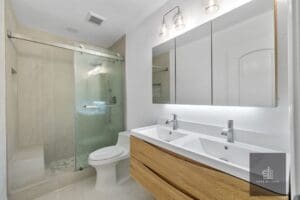Let’s Talk About Your Thirsty Yard, Shall We?
Okay, let’s be real for a second. Is anyone else tired of watching their water bill climb faster than a kid on a sugar rush, all just to keep a patch of grass green for two months? We feel you. Here in the Bay Area, and especially in a beautiful spot like Golden Bay, our weather patterns are… let’s call them ‘unpredictably committed to long dry spells.’ But what if we told you that a stunning, vibrant yard that laughs in the face of a drought isn’t just a fantasy?
It’s totally achievable, and honestly, it’s a game-changer. We’re not just talking about replacing your lawn with a bunch of gravel and a single, lonely cactus (unless that’s your aesthetic, no judgment). We’re talking about creating a lush, textured, and incredibly resilient outdoor space that saves you time, money, and a whole lot of worry. Think of it as a low-maintenance, high-reward lifestyle upgrade for your home.
And while we’re experts in making the inside of your home perfect—from a kitchen remodeling project in Danville to a whole house remodeling for a family in Walnut Creek—we know that the outside matters just as much. Your garden is an extension of your living space. So, grab a cool drink, and let’s dive into how we can transform your Golden Bay yard into a drought-tolerant oasis.
Why Bother With a Drought-Tolerant Garden?
Seriously, why go through the effort? Well, beyond the obvious benefit of saving a small fortune on your water cost, a drought-tolerant garden is basically the ultimate set-it-and-forget-it yard. Well, almost. We’re not magicians, but we’re close.
Once established, these gardens require significantly less watering, less mowing, and less fertilizing. That means more weekends spent actually enjoying your yard, and fewer spent toiling in it. You’re also creating a habitat for local pollinators like bees and butterflies, which is a pretty cool side effect.
From our perspective at EA Home Builders, a well-designed outdoor space adds immense value to your property. It’s like adding an extra room without the need for a home addition contractor. People are increasingly looking for sustainable, easy-to-manage homes. A beautiful, water-wise garden isn’t just a nice feature; it’s a smart investment. IMO, it’s one of the most impactful expert home improvement projects you can undertake.
It All Starts With The Dirt Under Your Feet
Before we get to the fun stuff (the plants!), we need to talk about the foundation. And no, we’re not just saying that because we’re a remodeling company that loves a good foundation. Your soil is the secret sauce.
Get to Know Your Soil
Most of our local soil has a lot of clay. It’s great for holding shape, but not so great for draining water. When it’s wet, it’s a swamp; when it’s dry, it’s concrete. You need to help it out.
The best move is to work in a generous amount of compost. This improves drainage and helps the soil retain moisture right at the roots where your plants need it most. It’s a simple step that makes every drop of water you do use about ten times more effective.
The Magic of Mulch
If we could only give you one tip, it would be this: MULCH. Heavily. Applying a 2 to 3-inch layer of mulch over your soil is like putting a cozy, protective blanket on your garden.
- It conserves water by dramatically reducing evaporation.
- It suppresses weeds that would otherwise compete with your plants for water.
- It regulates soil temperature, keeping roots cooler in the scorching summer heat.
Bark, wood chips, or even decomposed granite work wonders. It’s the easiest win in the gardening playbook.
Choosing Your Plant Dream Team
This is where the magic happens. Forget the boring old lawn; we’re building a tapestry of texture, color, and fragrance.
Go Native, You Won’t Regret It
Native plants are the undisputed champions of the drought-tolerant garden. They’ve spent millennia adapting to our specific Bay Area climate, which means they’re pre-programmed to thrive on winter rains and summer dryness. They’re the local experts.
Our Go-To Plant Picks for Golden Bay
We see a lot of gardens in our line of work, and these are some consistent performers that look fantastic:
- Manzanita (Arctostaphylos): A true California icon. Beautiful, sculptural red bark, evergreen leaves, and delicate flowers. It’s a structural powerhouse.
- California Lilac (Ceanothus): In the spring, these explode with the most incredible clusters of blue flowers. The bees go absolutely nuts for them.
- Sage (Salvia): There are so many varieties! From the towering Cleveland Sage to the low-growing Purple Sage, they offer gorgeous foliage and long blooming periods.
- Succulents: Talk about low-maintenance. Agaves, Aloes, and Echeverias provide bold, architectural shapes and are practically impossible to kill with neglect. Perfect for busy homeowners.
To make your life easier, here’s a quick-reference table for some of our favorites:
| Plant Name | Type | Water Needs (Once Established) | Key Features & Why We Love It |
|---|---|---|---|
| Manzanita | Shrub | Very Low | Incredible red, sculptural bark; year-round interest; tough as nails. |
| California Poppy | Perennial | Low | Cheerful orange blooms; self-seeds easily; a classic California beauty. |
| Cape Rush (Chondropetalum tectorum) | Ornamental Grass | Low | Adds fantastic vertical texture; rustles beautifully in the wind. |
| Lavender | Shrub | Low | Aromatic foliage and flowers; great for borders or hedging. |
| Society Garlic | Perennial | Low | Edible flowers and leaves; long-blooming purple flowers; deer-resistant. |
Design Like a Pro: It’s More Than Just Plants
A great garden is like a great bathroom remodeling project—it’s all about how the pieces work together. You wouldn’t just randomly place a toilet in the middle of the room, right? The same logic applies outside.
Zoning is Your Best Friend
Group your plants according to their water needs. This is called “hydrozoning.” Put your thirstier plants (if you have any) together in one area on a separate irrigation line, and let your drought-tolerant champions hang out together. It’s efficient and makes your watering routine a breeze.
Incorporate Hardscaping
This is where our inner general contractor gets really excited. Hardscaping refers to the non-plant elements of your garden: patios, pathways, decks, and retaining walls.
Adding a stone patio or a meandering gravel path doesn’t just look good; it reduces the amount of area you need to plant and water. It creates usable living space. If you’re thinking about a custom remodel of your outdoor area, blending plants with hardscaping is the key to a truly luxurious and functional space. It’s the foundation of luxury home renovations outdoors.
Watering Wisely: The Final Piece of the Puzzle
Even drought-tolerant plants need a drink to get started. The goal is to water deeply but infrequently, encouraging those roots to grow down deep into the soil where it’s cooler and more moist.
Ditch the Sprinklers
Sprinklers are wildly inefficient, losing a huge amount of water to evaporation and wind. The closest you should get to a traditional sprinkler is watching your neighbor run theirs. 🙂
Embrace Drip Irrigation
A drip system is the undisputed king of efficient watering. It delivers water slowly and directly to the root zone of each plant, with virtually no waste. It’s a bit of an investment upfront, but it will pay for itself in water savings and plant health. It’s the kind of smart upgrade any expert home improvement pro would recommend.
Your Garden & Your Home’s Value
We can’t help but look at this through our lens as a home renovation contractor. A beautifully executed drought-tolerant garden is more than just landscaping; it’s a major home improvement. It boosts your curb appeal, creates an outdoor “room” for entertaining, and signals to future buyers that the home is modern, efficient, and thoughtfully maintained.
Think of it this way: after a kitchen remodeling project or a basement remodel, the garden is the next logical step to creating your dream home. And if you ever need help with those indoor projects—maybe you’re looking for the nearest reputable bathroom renovation contractor or the best basement contractors nearby—you know who to call. Ahem. 🙂
Let’s Tackle Your Burning Questions
We get it, this is a big shift in thinking. So, let’s answer some of the most common questions we hear.
1. Will a drought-tolerant garden look boring and sparse?
Absolutely not! This is the biggest misconception. A well-designed water-wise garden is bursting with color, texture, and life. It’s about choosing plants for their form and foliage, not just their flowers. You can have a garden that is dynamic and interesting 365 days a year. It’s the opposite of boring.
2. What about the initial cost and installation price?
It’s true, there can be an upfront investment, especially if you’re incorporating new soil, irrigation, and hardscaping. But you have to weigh that against the long-term savings on your water bill and the reduced maintenance cost. Plus, the increase in your property value can be significant. It’s an investment that pays you back for years to come.
3. Is it safe for my kids and pets?
Generally, yes! The vast majority of popular drought-tolerant plants are perfectly safe. As with any garden, it’s always wise to do a quick check on a specific plant if you have a pet that likes to nibble on greenery. But you can easily create a lush, safe environment for the whole family to enjoy. FYI, many sages and grasses are super soft and fun for kids to touch.
Your Golden Bay Oasis Awaits
Transforming your yard isn’t as daunting as it seems. It’s about working with our environment, not against it. You’ll save money, save time, and get a uniquely beautiful landscape that reflects the natural beauty of the Bay Area.
And remember, whether you’re revamping your garden, planning a bathroom remodeling project in Oakland, or considering a whole house remodeling in Walnut Creek, a holistic approach to your home is key. At EA Home Builders, we love helping homeowners create spaces they adore, inside and out. If you ever want to chat about how your outdoor dreams can dovetail with your indoor needs, give us a call. We’d love to hear about your project.
Now, go forth and garden with confidence. Your future, low-maintenance, water-sipping yard is waiting. 🙂






